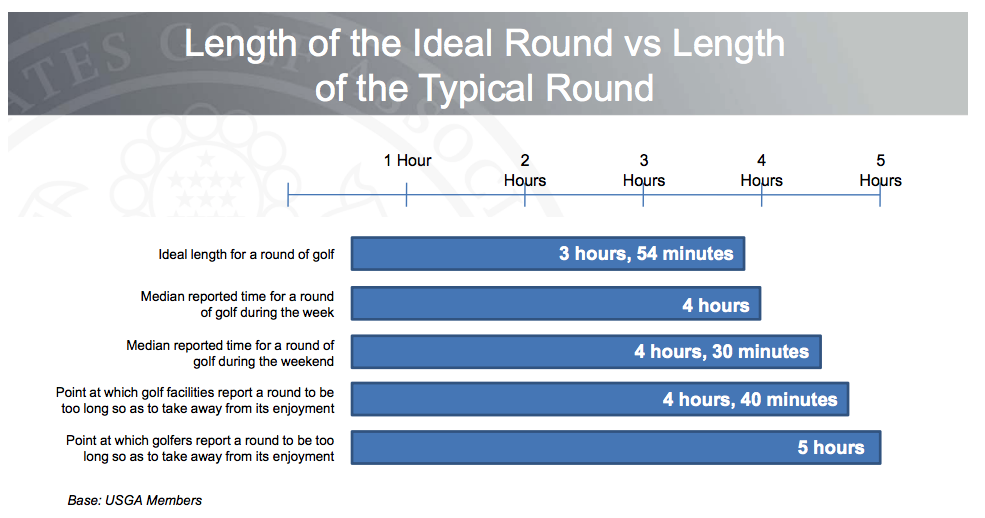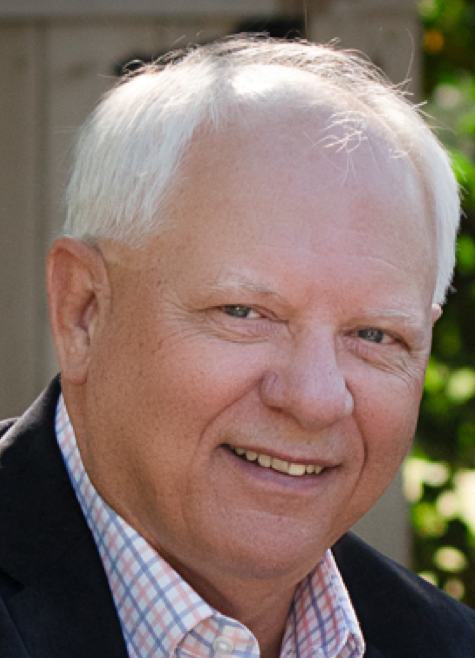 What happened to the 3 1/2 hour round of 18 holes of golf? Or even the 4 1/2 hour Charity Scramble? Is the slow pace of golf killing Golf?
What happened to the 3 1/2 hour round of 18 holes of golf? Or even the 4 1/2 hour Charity Scramble? Is the slow pace of golf killing Golf?
Today’s average round for a Twosome is 4 hours which back in 2008 a Twosome could play anywhere in 3 1/2 hours. 30 minutes is not really that much time but for many of today’s fast pace business golfers, 30 minutes is time enough for them to close a sale., so why waste that time playing golf?
Golf is Dying a Slow Death
There is no doubt the public’s interest in playing golf is flatlining and in many places of the country where golf courses are not managed properly, Golf has been put on life support. So, how real is the slow pace of play issue and is it really killing golf?
Here is what the USGA Reseach shows…
 Business Golf Studies
Business Golf Studies
My study I performed in 2004 and 2005 on the impact slow pace of play had on a round of business golf still hold true today and in nearly all cases are confirmed with what the USGA reports.
Some of the reasons I found causing the Slow Pace of Play were:
- Poor Golf Skills. A growing percentage of golfers have poor golf skills. This mean 90% of their golf shots do not go in the direction they intended, nor with enough distance to play to Par for 14 of the 18 holes. The same large percentage of golfers with poor golf skills are not interested in taking the time to improve their game so their pace of play could increase. The increase in amateur golfer’s average strokes per hole confirms also the growing number of golfers who feel learning to play golf skillfully is a waste of their time.
- No Policy Enforcement. Lack of enforcement of Pace of Play Policies by the golf facilities management team is a cause for the slow pace of play. Over 40% of the interviews I had with the golf club “Starters”, or course managers, produced remarks like..”If we were to enforce the pace of play policy we would start getting golfers mad which would lead to them demanding their money back. Our golf facility is out to make money to keep the golf course open. We cannot afford to enforce the policy. Golfers will need to self-enforce the policy.” Clearly, many golf course owners feel any enforcement of pace of play policy would push paying golfers away.
- Long Preshot Routines. Amateur golfers need to realize they are not professionals and therefore should not spend five minutes lining up 3-foot putts, go through obsessively long pre-shot routines, throw grass in the air to check for windage on a less than 100 yard shot and most certainly should not spend unnecessary amounts of time deciding whether their playing partner’s ball is an inch closer to the hole than theirs.
- Etiquette & Attitudes. People new to Golf are not being taught the rules and etiquette of the game of golf. Not knowing the etiquette on when to allow a group to play through has had an adverse effect on slow pace play.
- Professional Golf. Yes, the PGA stars every golfer enjoys watching play professionally are not helping the pace of play at the public and private golf clubs. It is understood that the professionals have a lot on the line and how well they score effects their paycheck. Unfortunately, everything the professionals do on TV to prepare for their next shot is seen in the eyes of the recreational golfers as an endorsement on how much time they should take when they play the public courses. Professional golfers should be better role models on the pace of play and demonstrate with their play how to manage the time before they make their shot.
- Monster Golf Courses. When Tiger Woods and his posse blasted on the scene in 1995, his average driving distance was over 300 yards. Now the average professional golfer averages over 325-yard drives. Over 85% of the golf courses in the country averaged less than 6500 yards meaning they can not accommodate that length of the golf shot. As a result, starting in 2000, hundreds of golf courses were designed and built with an average length of over 7000 yards. The monster size golf holes help satisfy the most skillful golfers of the world, but for the 99% of the golfers attempting to emulate their favorite golf professional, it produced a nightmare for the pace of play. 82% of the Average Golfers I interviewed refused to play from a forward tee that better matched their golf skills. Which means for a 14 handicapper playing from the back tees of a 600-yard par five now makes the hole a Par 7. Adding two more strokes to each hole for the not only resulted in very high scores but also adds nearly one hour to the pace of play.
All of these issues clear produce slow pace of play. There are obvious solutions which all lay in the hands of golfers, golf facilities, and the Golf Industry. There are solutions for each issue. I’ll come back in another blog to address them. However, overall, if golfers just knew that these issues were problems causing the slow pace of lay they would naturally help solve many of these issues.
What are some of these solutions? I’ll come back in another blog to address a few of them.
Until then, let me know how I can help.







